
Art | Resources
Is There a Safe Wallpaper?
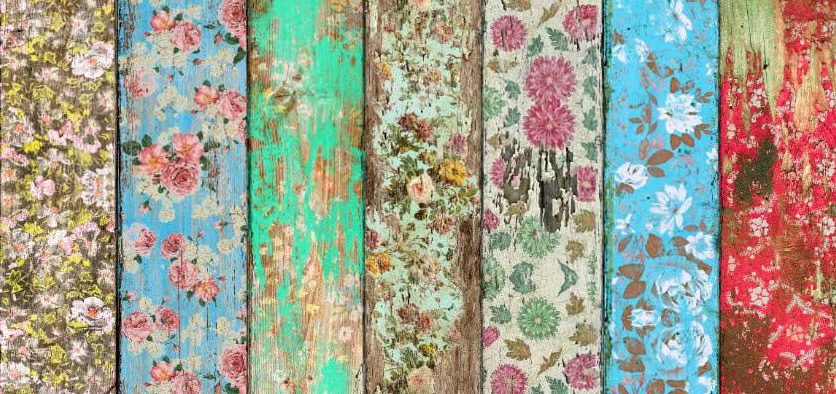
Question from Eliana
Hi Debra,
I am thinking of having wallpaper in my dining room. The selection of non-vinyl wallpaper is very slim. I am very green and keep indoor air as clean as I can. The question is, does vinyl off gas forever? The other question is, what about the glue they use to put it up. Is it sealed once the wallpaper is on and if not does it off gas forever?
It is so challenging to stay green in the world we live in.
Please let me know?
Thanks so much.
Debra’s Answer
Soft vinyl outgassed forever, to a lesser and lesser degree as time goes by. I really recommend no using vinyl wallpaper.
In addition, if you use air conditioning, mold can grow behind wallpaper which is a vapor barrier stopping hot and moist exterior air entering walls in summer.
Over the years I’ve seen a few uncoated paper wallpapers, but personally, if you want a pattern on the walls, I would stencil or hand paint the pattern with a nontoxic paint rather than try to deal with a paper wallpaper. I’m concerned it may mold.
Here is a very good list of the many different types of wallpapers, showing the materials—both synthetic and natural—used to make them:
Wallpaper Types, Textures, And Their Different Applications
And here is a resource about wallpaper adhesives:
Wallpaper Adhesives
The choices for paste seems to be vinyl, wheat, or cellulose.
So it IS possible to find a natural wallpaper and a natural paste, but I am concerned about mold, especially in a humid environment.
Chlordane Alert
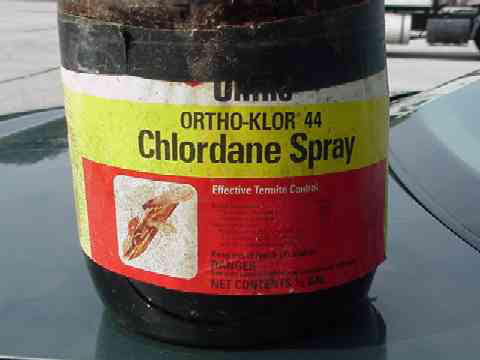
Question from Magda
Dear Debra,
Originally I thought that chlordane would not be a problem in and around houses any more. Until I came upon the study, article, and description of practices excerpted below.
Sorry to bring up such a long, unpleasant litany, now that spring is here and the daffodils are blooming!
But I live in Iowa and love gardening. It is very hard not to weed close to house walls, where a potential contmination would be worst, and has possibly been spread around through the building of porches, digging near foundations etc.
Do you know of any chlordane test except the one offered by Dr. Richard A. Cassidy of Toxfree, who also put the mentioned practices described below on the internet?
Thank you very much in advance. Thank you also for helping us ordinary people (who do not know science) live healthier lives.
Magda
STUDY
Health Dangers of Chlordane
by Dr. Edward Group DC, NP, DACBN, DCBCN, DABFM
[schema] published + updated Published on March 14, 2013, Last Updated on May 28, 2013
The University of Iowa examined soil samples and discovered that Cedar Rapids Iowa had chlordane soil contamination almost as severe as urban areas of China.
References
References:
Hedley AJ, Hui LL, Kypke K, Malisch R, van Leeuwen FX, Moy G, Wong TW, Nelson EA. Residues of persistent organic pollutants (POPs) in human milk in Hong Kong. Chemosphere. 2010 Apr;79(3):259-65. doi: 10.1016/j.chemosphere.2010.01.047. Epub 2010 Mar 2.
Bao LJ, Maruya KA, Snyder SA, Zeng EY. China’s water pollution by persistent organic pollutants. Environ Pollut. 2012 Apr;163:100-8. doi: 10.1016/j.envpol.2011.12.022. Epub 2012 Jan 11. Review.
Martinez A, Erdman NR, Rodenburg ZL, Eastling PM, Hornbuckle KC. Spatial distribution of chlordanes and PCB congeners in soil in Cedar Rapids, Iowa, USA. Environ Pollut. 2012 Feb;161:222-8. doi: 10.1016/j.envpol.2011.10.028. Epub 2011 Nov 26.
Mast MA, Alvarez DA, Zaugg SD. Deposition and accumulation of airborne organic contaminants in Yosemite National Park, California. Environ Toxicol Chem. 2012 Mar;31(3):524-33. doi: 10.1002/etc.1727. Epub 2012 Feb 6.
Morrissey CA, Pollet IL, Ormerod SJ, Elliott JE. American dippers indicate contaminant biotransport by Pacific salmon. Environ Sci Technol. 2012 Jan 17;46(2):1153-62. doi: 10.1021/es2028058. Epub 2011 Dec 23.
Lopez J, Boyd D, Ylitalo GM, Littnan C, Pearce R. Persistent organic pollutants in the endangered Hawaiian monk seal (Monachus schauinslandi) from the main Hawaiian Islands. Mar Pollut Bull. 2012 Nov;64(11):2588-98. doi: 10.1016/j.marpolbul.2012.07.012. Epub 2012 Aug 9.
Everett CJ, Matheson EM. Biomarkers of pesticide exposure and diabetes in the 1999-2004 national health and nutrition examination survey. Environ Int. 2010 May;36(4):398-401. doi: 10.1016/j.envint.2010.02.010. Epub 2010 Mar 17.
Goldner WS, Sandler DP, Yu F, Hoppin JA, Kamel F, Levan TD. Pesticide use and thyroid disease among women in the Agricultural Health Study. Am J Epidemiol. 2010 Feb 15;171(4):455-64. doi: 10.1093/aje/kwp404. Epub 2010 Jan 8.
Vogt R, Bennett D, Cassady D, Frost J, Ritz B, Hertz-Picciotto I. Cancer and non-cancer health effects from food contaminant exposures for children and adults in California: a risk assessment. Environ Health. 2012 Nov 9;11:83. doi: 10.1186/1476-069X-11-83.
Sakamoto K, Nishizawa H, Manabe N. Behavior of pesticides in coffee beans during the roasting process. Shokuhin Eiseigaku Zasshi. 2012;53(5):233-6.
ARTICLE
Environ Pollut. 2012 Feb;161:222-8. doi: 10.1016/j.envpol.2011.10.028. Epub 2011 Nov 26.
Spatial distribution of chlordanes and PCB congeners in soil in Cedar Rapids, Iowa, USA.
Martinez A1, Erdman NR, Rodenburg ZL, Eastling PM, Hornbuckle KC.
Author information
Department of Civil & Environmental Engineering, IIHR-Hydroscience and Engineering, The University of Iowa, 4105 SC, Iowa City, IA 52242, USA.
Residential soils from Cedar Rapids, Iowa, USA were collected and analyzed for chlordanes and polychlorinated biphenyls (PCBs). This study is one of the very few urban soil investigations in the USA. The chlordanes concentrations ranged from 0 to 7500 ng g(-1) dry weight (d.w.), with a mean and standard deviation of 130 ± 920 ng g(-1) d.w., which is about 1000 times larger than background levels. ΣPCB concentrations ranged from 3 to 1200 ng g(-1) d.w., with a mean and standard deviation of 56 ± 160 ng g(-1) d.w. and are about 10 times higher than world-wide background levels. Both groups exhibit considerable variability in chemical patterns and site-to-site concentrations. Although no measurements of dioxins were carried out, the potential toxicity due to the 12 dioxin-like PCBs found in the soil is in the same order of magnitude of the provisional threshold recommended by USEPA to perform soil remediation.
Copyright © 2011 Elsevier Ltd. All rights reserved.
PRACTICES
Information provided by
Richard W. Pressinger (M.Ed.), Wayne Sinclair, M.D.
How to Correct Chlordane Home Contamination
Application to Outside Wood Surfaces
Chlordane was frequently applied to the outside wood surfaces of many homes built before 1988. This would have been done because of an actual termite problem or as a preventive safeguard from a worried homeowner. Under first consideration, the application to the outside of the home would not appear as a problem, however, as described in research on the chlordane web site, conducted by Dr. Kaye Kilburn of the the University of California, even outdoor applications of the chemical can find their way indoors to contaminate the interior to a level that can cause a variety of health problems from increased infections to increases in many neurological disorders including – anger, migraine headaches and depression.
Correction Procedure
The least expensive way to correct contamination of the exterior wood surfaces of a home is to seal the wood with a hard, enamel based paint. The most efficient method for correcting this problem is to identify which side of the home the problem exists and to then replace the contaminated wood pieces. If the home is constructed of 4×8 sheets of plywood siding, these sheets can be easily replaced for a materials cost of about $25.00 per sheet. Check with the pest control company who applied the chlordane and ask if their records show where chlordane was applied.
Infiltration up through the Foundation of the Home
This is the same route that radon has been found to contaminate homes throughout the U.S. When a home was built before 1988, standard procedure was to literally saturate 100 gallons of chlordane into the soil per 1000 square feet of home area just before the concrete foundation was poured. Therefore, a 2000 square foot home would have 200 gallons of chlordane saturated into the soil. After several years of “settling,” cracks form in the foundation and basement walls or around plumbing pipes which has been found to allow for entry of the chemical into the home.
Correction Procedure
Success has been shown with underground infiltration problems by simply identifying where the cracks in the foundation are located and sealing these with an acrylic caulking or similar compound. It is also recommended to caulk around all plumbing pipe entry points through the foundation. As chlordane was often concentrated in the outer one or two foot perimeter just underneath the foundation, there needs to be a good caulking seal at the point where the wall meets the floor
Attic Contamination
As the attic of a home is comprised of wooden 2×4 support beams, these were often sprayed with chlordane by a pesticide company to ward off future termite problems. Unfortunately, when the applicator is spraying the beams, the chemical can easily drip onto the ceiling drywall sheets that were nailed to the 2×4’s. Drywall is made of rock powders that act like a sponge, quickly absorbing the chemical and then outgas the chlordane into the living area below. Contamination would then occur to the area below which could be either the kitchen, living room or bedroom.
Correction Procedure
Ceiling drywall that has soaked up chlordane due to an attic application of chlordane can be widespread. Ceiling drywall can be purchased inexpensively in 3/8 inch thicknesses for around $5.00 for a 4×8 foot sheet. It is recommended that these be placed over existing ceiling drywall or to completely remove the existing drywall and to then apply new drywall.
Accidental Spills
The research has documented spills of chlordane containers occurring during testing research and has certainly happened to an unknown percentage of homes built before 1988. The spills could range from a few ounces to one gallon or 55 gallon containers. If one room registers a much higher chlordane level than another room – the possibility of a chlordane spill should be considered.
Correction Procedure
If a significant amount of chlordane has been spilled onto any inside flooring the two correction procedures in order of effectiveness include – painting the floor with an enamel based paint or laying ceramic or hard vinyl tile over the contaminated area.
Normal Application Residue
Although chlordane was routinely used outside the home up through March of 1988, it was often used for the indoor control of roaches and ants up until 1981. Chlordane was easily purchased by homeowners from department stores before this date as an effective roach and ant pesticide. Indoor areas routinely treated with chlordane include underneath the kitchen sink, behind the refrigerator, behind the dishwasher and along baseboards throughout the bedrooms. Sometimes the chemical odor of chlordane underneath a kitchen sink is “overwhelming” due to this area receiving repeated chlordane applications. Chlordane contamination still occurs today as many “garden/tool sheds” still have bottles of outdated chlordane on the shelves.
Correction Procedure
If contamination under the kitchen sink is suspected, perform a chlordane air test underneath the sink. High levels found here can be “sealed in” using new plywood or if air chlordane contamination is exceptionally high, the homeowner may be better off replacing the old counter top with a new one. Baseboards along the floor can be sealed with an enamel paint or can be replaced at a cost of 30 cents to $1.00 per foot.
Debra’s Answer
Thank you for all this information Magda. Chlordane is a very toxic pesticide and it’s important to know it’s still a hazard to watch out for.
CDC Issues New Warning: No Safe Blood Level for Lead
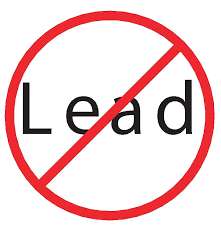
In January, the Centers for Disease Control (CDC) issued a new Fact Sheet for Blood Lead Levels in Children.
The Fact Sheet says:
Protecting children from exposure to lead is important to lifelong good health. Even low levels of lead in blood have been shown to affect IQ, ability to pay attention, and academic achievement. And effects of lead exposure cannot be corrected.
The most important step parents, doctors, and others can take is to prevent lead exposure before it occurs.
On the CDC website they say, ” No safe blood lead level in children has been identified.”
The Fact Sheet gives tips for parents on how they can protect their children from exposures to lead.
Microban Exposure From Breathing?
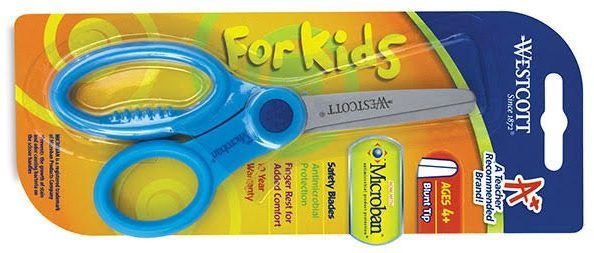 Microban is now on all kinds of products kids and adults are touching every day.
Microban is now on all kinds of products kids and adults are touching every day.
Question from Mary
Hi Debra,
My assistant just bought a floor pad for me that says “microban” on the label.
I know that microban is an antimicrobial, but since it will be 5 feet from my nose, I don’t suppose there is a need to be concerned about toxicity. However, if it wears away like my old pads do we’ll be tracking the dust onto the living room carpet. But then I don’t sit on the floor so maybe that’s not an issue either. I would not buy a Rubbermaid dish drainer because it has microban, but this is different.
In terms of the microban, do you think it is risky to have these pads on the kitchen floor?
Thanks for your input.
Debra’s Answer
This is a very good question.
I had to look this one up because exposures can happen through breathing, eating or drinking, or skin contact. And certainly if microban requires skin contact for it to get into your body, breathing it wouldn’t be an issue. Like stainless steel, for example. Perfectly fine to breathe, but it will release heavy metals into food or water.
Microban is a trade name for the chemical triclosan, so I looked up triclosan.
The primary route of entry is through the skin from personal care products and ingestion from dental care products.
Warnings from various manufacturers are limited to “skin irritation” and “serious eye irritation.”
I found an MSDS that says that inhalation is not a route of entry for triclosan in an antibacterial soap.
So this is beginning to sound like there isn’t much exposure to triclosan found on flooring pads.
How Antibiotics and Antibacterials are Compromising our Health
 My guest today is Martin J. Blaser, MD, author of Missing Microbes: How the Overuse of Antibiotics Is Fueling Our Modern Plagues. We’ll be talking about how the massive increases in the developed world of “modern plagues”—such as obesity, type 1 diabetes, asthma, allergies, esophageal cancer, celiac disease, Crohn’s disease, ulcerative colitis, and autism—are related to loss of diversity of the complex—and crucially important—ecosystem of microorganisms within our bodies on which we all depend. As diversity diminishes, our immune systems are compromised, and we become much more susceptible to new infections. And this loss of micro-organism diversity is due to the use of wide use of antibiotics and products that contain antibacterials such as triclosan.
My guest today is Martin J. Blaser, MD, author of Missing Microbes: How the Overuse of Antibiotics Is Fueling Our Modern Plagues. We’ll be talking about how the massive increases in the developed world of “modern plagues”—such as obesity, type 1 diabetes, asthma, allergies, esophageal cancer, celiac disease, Crohn’s disease, ulcerative colitis, and autism—are related to loss of diversity of the complex—and crucially important—ecosystem of microorganisms within our bodies on which we all depend. As diversity diminishes, our immune systems are compromised, and we become much more susceptible to new infections. And this loss of micro-organism diversity is due to the use of wide use of antibiotics and products that contain antibacterials such as triclosan. 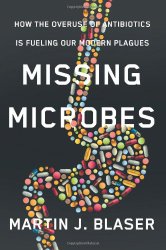 Dr. Blaser has studied the role of bacteria in human disease for more than thirty years. He is the director of the Human Microbiome Program at New York University, the former president of the Infectious Diseases Society of America, and has held major advisory roles at the National Institutes of Health. He cofounded the Bellevue Literary Review, and his work has been written about in many newspapers and journals, including The New Yorker, Nature, The New York Times, The Washington Post, and The Wall Street Journal. He lives in New York City. www.martinblaser.com.
Dr. Blaser has studied the role of bacteria in human disease for more than thirty years. He is the director of the Human Microbiome Program at New York University, the former president of the Infectious Diseases Society of America, and has held major advisory roles at the National Institutes of Health. He cofounded the Bellevue Literary Review, and his work has been written about in many newspapers and journals, including The New Yorker, Nature, The New York Times, The Washington Post, and The Wall Street Journal. He lives in New York City. www.martinblaser.com.
The Dangers of Antimicrobials and How to Choose Products Without Them
 My guest today is Larry Plesent, Founder of Vermont Soap. We’re going to talk about why you shouldn’t use toxic antimicrobials, which products contain them and where you can find antimicrobial-free alternatives, and some toxic free ways to kill germs. Vermont Soap makes “100% natural and non-toxic alternatives to the chemical based personal care products now in general use, including; handmade bar soaps for sensitive skin, anti-aging products, 100% natural shower gels, castile liquid soaps and non-toxic cleaners. Most products made by Vermont Soap are certified to USDA organic standards.” Larry is also a writer,philosopher, restaurateur and farmer. www.debralynndadd.com/debras-list/vermont-soap
My guest today is Larry Plesent, Founder of Vermont Soap. We’re going to talk about why you shouldn’t use toxic antimicrobials, which products contain them and where you can find antimicrobial-free alternatives, and some toxic free ways to kill germs. Vermont Soap makes “100% natural and non-toxic alternatives to the chemical based personal care products now in general use, including; handmade bar soaps for sensitive skin, anti-aging products, 100% natural shower gels, castile liquid soaps and non-toxic cleaners. Most products made by Vermont Soap are certified to USDA organic standards.” Larry is also a writer,philosopher, restaurateur and farmer. www.debralynndadd.com/debras-list/vermont-soap
Nontoxic Hard Case for Glasses and Sunglasses?
Question from Rebecca
Hi Debra,
Do you have any suggestions on hard cases for glasses that are non-toxic?
The case I have for my sunglasses smells like it is off gassing possibly formaldehyde (from glues?). I can smell it on the plastic frames when I put them on my face. Ugh.
Any good suggestions for hard case?
Debra’s Answer
I don’t have a suggestion because I don’t use a hard case for my glasses. I’m usually wearing them or they are on top of my head.
I haven’t even looked at hard cases for years.
Readers, any suggestions?
POLL: Californians Overwhelmingly Support Right to Know Legislation for Cleaning Product Ingredients

Proposals in Cleaning Product Right to Know Act (Senate Bill 258) enjoy strong bipartisan support
SACRAMENTO, CA – A new poll shows California voters overwhelmingly support legislation to require ingredient labeling on cleaning products sold in the state. Sen. Ricardo Lara (D-Bell Gardens) introduced the Cleaning Product Right to Know Act of 2017 (Senate Bill 258) to require detailed ingredient labels on cleaning products sold in the state.
The Cleaning Product Right to Know will give full disclosure about what is in the products millions of families and domestic workers use every day.
“It is clear that Californians want to know what is in their cleaning products so they can make good choices for themselves and their families,” said Sen. Lara. “Unknown chemicals are lurking in our homes and workplaces, and it’s the reason janitors and domestic workers have higher rates of asthma, respiratory illnesses and birth defects. The Cleaning Product Right to Know Act will protect the health and safety of workers and all families.”
Major findings of the poll include:
More than three-quarters of voters (78%) are supportive of legislation to label cleaning product chemicals.
Support crosses party lines with 87% of Democrats, 76% of no-party voters and 67% of Republicans in favor.
Nearly three-quarters of voters (72%) would be more likely to support their legislator if they backed the proposed bill.
As voters learn more, their support for the proposed policy solidifies.
Fairbank, Maslin, Maullin, Metz & Associates (FM3) conducted the poll of 1,000 registered California voters from January 15-19, 2017, before Senate Bill 258 was introduced.
Click here to read the Cleaning Product Right to Know Act: www.leginfo.legislature.ca.gov/faces/billNavClient.xhtml?bill_id=201720180SB258
This is important because cleaning products are not required by law to list their ingredients, even though they are some of the most toxic products on the market. — Debra
JUstenbois
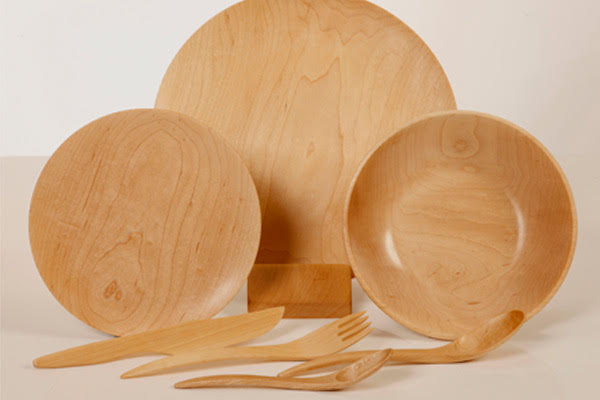 Wooden dinnerware and utensils, handmade from sustainably-harvested maple, all in one piece without gluing. Why wood? “Wood preserves the integrity of the foods—the neutrality—without contact with metals which emits certain tastes and degradation….Contact with wood is organic and warm. Sound manipulation is discreet and pleasant. The food slides least movement. And, for the taste it is like eating with chopsticks.” …During a simple meal, on the table there was a piece of wood and an x-acto blade… soon after a knife was born, and a tomato finely sliced! For the following 6 months, twelve families agreed to trade their metal forks for wooden forks. The comments were outstanding. A year of research and development followed. In 2004 JUstenbois was born. A team of 9 artisans worked at creating maple plates and utensils for your dining room table. These settings, finely chiseled out of selected cultivated sugar maple trees, have a very long life.” Nearly 9,000 utensils are made from one tree.
Wooden dinnerware and utensils, handmade from sustainably-harvested maple, all in one piece without gluing. Why wood? “Wood preserves the integrity of the foods—the neutrality—without contact with metals which emits certain tastes and degradation….Contact with wood is organic and warm. Sound manipulation is discreet and pleasant. The food slides least movement. And, for the taste it is like eating with chopsticks.” …During a simple meal, on the table there was a piece of wood and an x-acto blade… soon after a knife was born, and a tomato finely sliced! For the following 6 months, twelve families agreed to trade their metal forks for wooden forks. The comments were outstanding. A year of research and development followed. In 2004 JUstenbois was born. A team of 9 artisans worked at creating maple plates and utensils for your dining room table. These settings, finely chiseled out of selected cultivated sugar maple trees, have a very long life.” Nearly 9,000 utensils are made from one tree.
Variya
 Nickel-free earring made from titanium and bioblum, for metal allergies and extra sensitive skin. “I also specialize in Custom Bridal Jewelry.” If you’ve given up finding beautiful jewelry you can wear for your wedding, look here.
Nickel-free earring made from titanium and bioblum, for metal allergies and extra sensitive skin. “I also specialize in Custom Bridal Jewelry.” If you’ve given up finding beautiful jewelry you can wear for your wedding, look here.
CocoTherapy
 All the health benefits of coconut in products designed for pets. “CocoTherapy Organic Virgin Coconut Oil and Coconut Chips are 100% all natural, made of human-grade ingredients. They are made in an USDA organic inspected human food facility.
All the health benefits of coconut in products designed for pets. “CocoTherapy Organic Virgin Coconut Oil and Coconut Chips are 100% all natural, made of human-grade ingredients. They are made in an USDA organic inspected human food facility.
Ergo Workspace
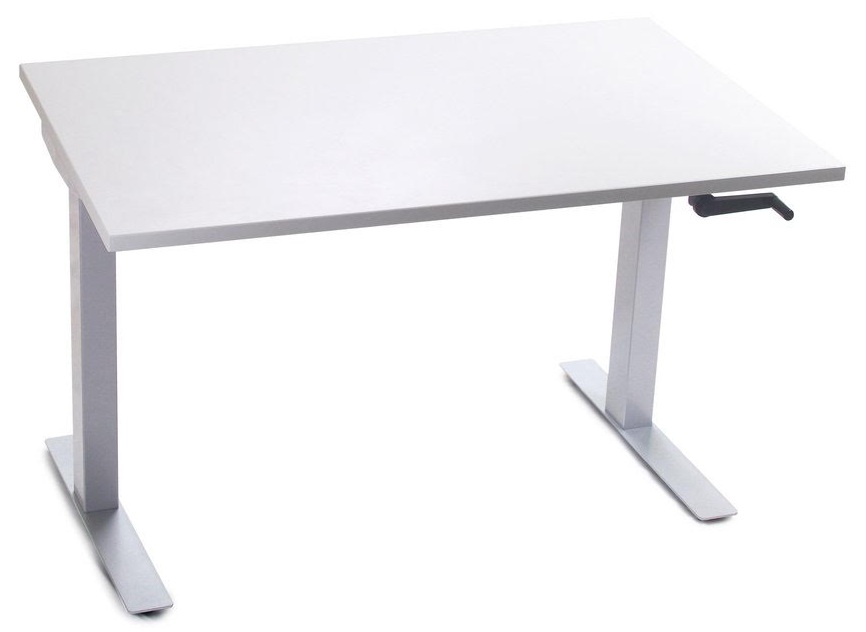 I saw one of these desks at a friend’s house and then came across it online. It’s a desk that allows you to adjust desk height with electronic controls (or manual crank), so you can adjust you desk from sitting to standing and back to sitting in mere seconds. Plus it’s just a beautiful desk with a really smooth finish. I don’t see any materials on the website and no contact information, but the thing is you can buy the metal base separately and then mix and match the tops, so I’m thinking that you could put your own top on it as well, made from any material you choose. The electronic controls sit discreetly at arm’s length below the top on the right side. It’s a pretty cool desk!
I saw one of these desks at a friend’s house and then came across it online. It’s a desk that allows you to adjust desk height with electronic controls (or manual crank), so you can adjust you desk from sitting to standing and back to sitting in mere seconds. Plus it’s just a beautiful desk with a really smooth finish. I don’t see any materials on the website and no contact information, but the thing is you can buy the metal base separately and then mix and match the tops, so I’m thinking that you could put your own top on it as well, made from any material you choose. The electronic controls sit discreetly at arm’s length below the top on the right side. It’s a pretty cool desk!






